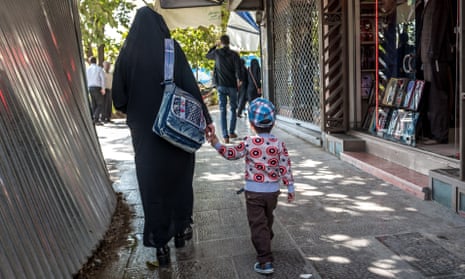Iran’s state hospitals and clinics are no longer performing vasectomies or giving out contraceptives in an attempt to revive flagging population growth, a senior health official has told state media.
Iranian women were now having 1.7 children on average, well below the 2.2 required to maintain the population, Hamed Barakati, director general of the Ministry of Health’s Office of Population and Family Health, told the Islamic Republic News Agency in an interview on Sunday. On current trends about a third of the country would be over 60 years old by 2050. “Whether we like it or not … we will become an ageing country,” he said.
Family planning procedures and products would continue to be available from pharmacies and private hospitals, however, and in public hospitals to women whose life was at risk, Barakati said.
Conservatives in Iran’s government, including the supreme leader Ayatollah Ali Khamenei, have been pushing citizens to have more children for at least a decade, by limiting access to family planning services, increasing the number of infertility clinics and telling Iranians it is safe to have children every 18 to 24 months – down from earlier advice to wait three to five years. Maternity leave was extended to nine months and fathers given two weeks off as part of a suite of reforms in 2013.
Yet birth rates have kept falling, which Barakati blamed on poor economic conditions that deterred men from committing to marriage and a family. “The young man will not be willing to marry or have children, even if we give him a loan, as long has he does not feel secure,” he said.
Women delaying marriage to pursue higher education as well as a cultural aversion to having more than two children were also factors the government needed to address, he added. The average Iranian has her first child at 29, compared to around age 26 for an American.
Hardliners have made the birth rate a national security issue and claimed foreign enemies have helped engineer the decline. Demography researchers have been arrested and accused of manipulating fertility statistics to try to hide the scale of the “population crisis”, according to state media.
Khamenei has cast the falling birth rate as the result of imported western thinking and said the country of 80 million should aspire to a population nearly twice that size.
Iran was lauded in the late 1990s for family planning policies that slashed the country’s birth rate from around seven children per woman in 1980 to fewer than two by 2011.
It did so with progressive initiatives including subsidised vasectomies, free condoms and cheap contraceptives, and countrywide education on sexual health and family planning with the slogans “Two children is enough” and “Fewer kids, better life”.
The falling fertility rates were encouraged by the country’s clerical rulers who worried that massive population growth during the 1980s – when families were encouraged to strengthen the wartorn country by producing “soldiers for Islam” – would stretch resources and lead to high unemployment in the future.
Rights groups have been critical of previous attempts to boost Iran’s birth rate, arguing they risk raising new barriers to women’s entry into the workforce and turning them into “baby-making machines”. Women make up 60% of Iranian university students but have one of the lowest labour force participation rates in the world.
Public-health officials have also warned that attempts to fight Aids and other sexually transmitted diseases would be set back by restricting condoms and other contraceptives.
